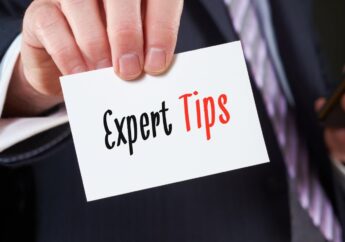3 Ways Online Retailers Can Break Through the Noise
by Arina Smith Marketing Published on: 18 December 2017 Last Updated on: 26 September 2018

Competition in the digital realm will only get more and more cutthroat as time goes on. Every year we see the online shopper become savvier and more discerning in where they shop and why. Over 80% of online shoppers are reported to conduct price research on the product before buying, and more than half begin their online searches at one of the major digital retailers such as Amazon. If an E-commerce site wishes to actively compete moving forward, they need to learn about and adapt to, the strategies that the most successful online retailers utilize as they gobble up more significant percentages of market share each year.
1. Use Data to Create a Dynamic Pricing Strategy
Price optimization and dynamic pricing are some methods store owners need to familiarize themselves with if they wish to stay relevant in the coming years. The costs of price data aggregation and strategizing software have gotten to the level where it is no longer an exclusive tool of the large sites and big box stores. Leveraging big data to create a dynamic and focused pricing strategy will help you to sustain margins and profitability, increase movement of critical value items, and to maintain your competitive positioning in the market, as explained here http://upstreamcommerce.com/competitive-price-tracking-and-monitoring/ about the price tracking tool.
Predictive pricing and dynamic pricing can also increase customer satisfaction while at the same time increasing profits, something that would generally seem counterintuitive. The trick is that when you can look at pricing history going back years and can raise and lower prices depending on demand and expectation – both you and the consumer benefit. You sell your products at the maximum reasonable price, and the consumer pays a price they deem reasonable.
These sorts of tools also allow you to strategically plan moves into specific niches and unique price based selling points.
2. Optimize your online shop
There are endless methods for shop optimization, as explained here. We will cover the three that we have found to be the most effective for dramatic shifts in both conversions and customer retention.
A. Include upsells for every product
You should never miss an opportunity to increase the size of a customer’s cart. Every product you sell should be linked or coupled with a related product, or at least one that is popular with a similar demographic.
If you really can find a product to cross promote with another, try to upsell more of the same product. This works more often than you would think. For example with makeup, soap or beauty products they tend to run out relatively quickly, offering a slight discount on an increased purchase number will often double or triple a sale. “Buy One; Gift One” offers can also work for products that may not deplete quickly.
With the right pricing strategy (see #1) and analysis, this method can drastically increase revenue even if you find yourself giving slight discounts on many sales.
B. Write compelling product descriptions
There is a reason that copywriters have been utilized by ad agencies and in-house marketing teams for over a century. Good copy will increase the buyer’s sense of urgency and desire to buy – the best copywriters can even give you stats on exactly how much the sales increase for the products they have worked on.
Honestly evaluate the descriptions on your site. Do they instill emotion? Are they both informative and compelling? This is often more important than business owners think.
Don’t just copy verbatim the manufacturer’s descriptions either. They typically aren’t written to convince consumer level buyers and repeat word usage will often get you penalized by the Google search engine.
Take the information provided and turn it into something that instills need in the buyer. Succinct, well written and compelling copy is best. Bullet points also help buyers (most just quickly scan the page) promptly obtain critical facts about the product.
C. Use Strategic Product Links Throughout Your Page
Lowering your bounce rate will help your page rank higher in search engines and will also increase your sales. This overlaps with what we talked about in up selling. Each product page should have promotional links to other related products; this keeps shoppers on your page. If you are selling electronics, cross-sell batteries on the page. Keep the shopper on your site as long as possible by constantly putting something related to their interests in front of them.
3. Control Your Online Presence Beyond Your Site
Social media, consumer reports, and product review pages all play a role in how your brand is regarded and where you land in the market. Spend the effort to make sure that you have a professional and positive presence in every channel your shoppers are likely to be using. Stay away from controversial statements and remain helpful in social media. Perhaps sponsor some Youtube videos or blog posts reviewing your products. One or two positive or negative comments won’t do much, but if you make it a goal to increase your digital presence in a positive way, over time the benefits to your brand will be exponential. The people at Cards Against Humanity have time and again shown the power of being clever and savvy to internet culture.
Read More:







































































































